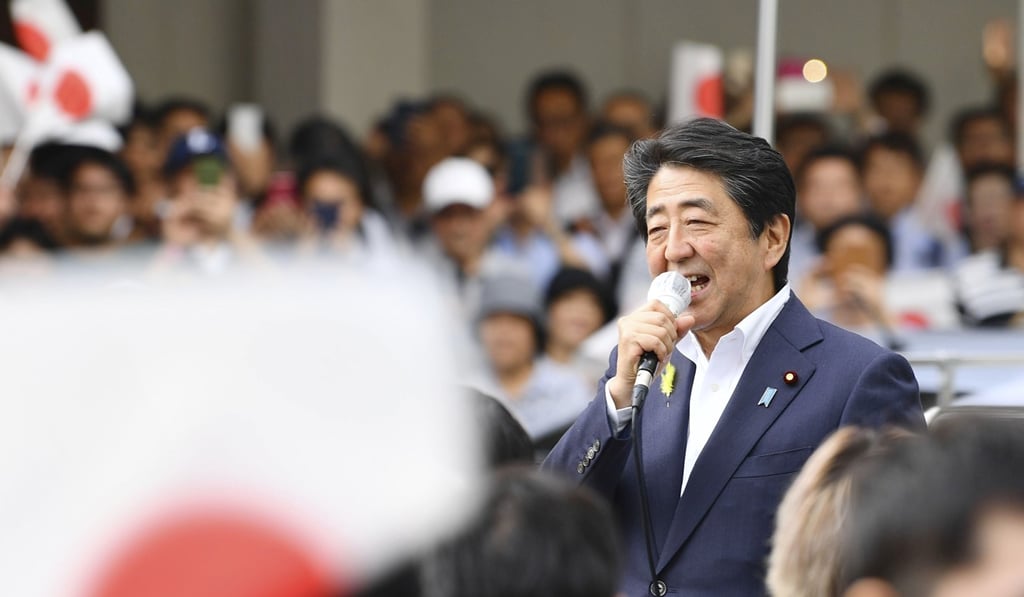Explainer | Explained: what’s at stake in Japan’s 2019 upper house election?
- The ruling LDP-Komeito coalition maintains its lead over the lacklustre opposition parties, and is poised to retain its two-thirds supermajority
- It is likely to be Prime Minister Shinzo Abe’s final campaign, as he has promised to not contest another term as LDP leader after 2021

Elections for half the upper house are fixed for every three years, so representatives serve staggered six-year terms. The number of seats has been raised from 242 to 248, to correct a voter-value disparity. For this election campaign, which officially started on July 4, there are 74 seats determined by first-past-the-post voting in prefectural constituencies, and the 50 other seats are allocated from national proportional representation votes on party lists.

If the governing coalition of the LDP and its junior partner the Komeito Party falls below its current upper house majority of 147, that will end Abe’s hopes of amending Article 9 of the constitution, to embed formal recognition of the Japanese Self Defence Forces (SDF).
Will Abe win, and what are the major issues of the campaign?